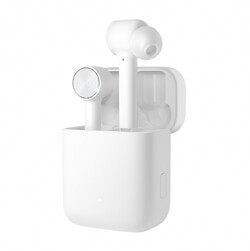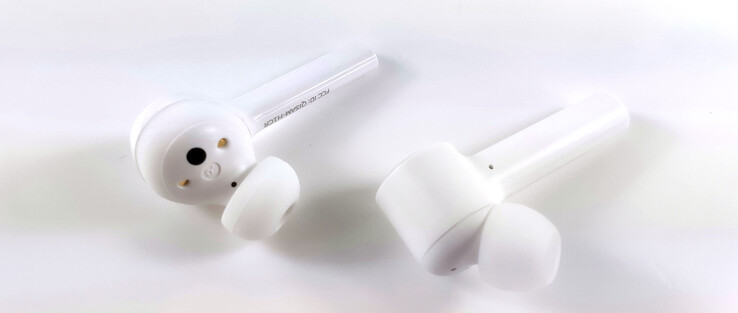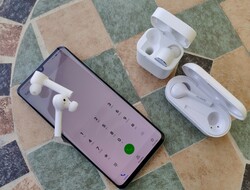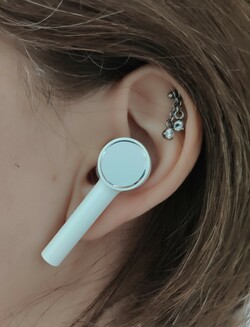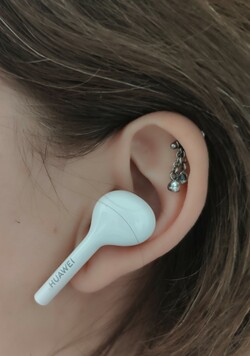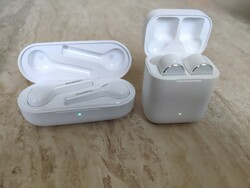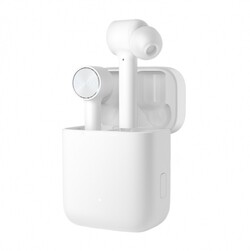Wireless earbuds have been growing in popularity, especially since the release of the Apple AirPods. This should have come as no surprise, as wireless earbuds provide more freedom than their wired counterparts and are less conspicuous than headphones such as the Bose QC35 II or the Sony WH-1000XM series. Most wireless earbuds also support True Wireless Stereo (TWS), which allows them to stream stereo audio content.
OEMs have increasingly been bringing more wireless earbuds to the market on the back of the AirPods’ success, for example, Samsung and its Galaxy Buds. Some look uncannily like AirPods too, two culprits of which are the Huawei FreeBuds Lite and the Xiaomi Mi AirDots Pro. Unsurprisingly, little separates these two sets of wireless earbuds.
Pricing & Availability
One thing that currently separates the two devices is availability. While Xiaomi is moving into more markets, it currently only sells the Mi AirDots Pro in China and must be imported from third-party resellers. Trading Shenzhen, for example, sells the AirDots Pro for approximately €80 (~$96), which may seem like a good deal. However, importing devices from China is fraught with difficulties that do not present themselves if you buy something in your home country. The AirDots Pro will probably have a longer delivery time than if you ordered a pair of AirPods online, and you may have to send the former back to China if you need to make a warranty claim. All things to keep in mind before buying the AirDots Pro.
By contrast, Huawei sells the FreeBuds Lite in more countries, although they do officially retail for €129 (~$155). You can find them for around €80 (~$96) online though. The FreeBuds Lite come with 24 months warranty, for reference. Please see our Guarantees, Return Policies & Warranties FAQ for country-specific information.
Case & Ergonomics
Huawei and Xiaomi have kept the weight of each earbud to around 6 g (~0.2 oz), which is light enough to not become too heavy during extended use. Both sets of earbuds are IPX4 certified, so they should withstand being splashed on by rainwater. The “X” means that they have no certifiable protection against the ingress of particles such as dust though.
The FreeBuds Lite and Mi AirDots Pro are both white, although the former has a glossy finish compared to the latter’s matte texture. The same applies to the charging cases. We prefer the ergonomics of the case that comes with the FreeBuds Lite compared to the one that Xiaomi has designed for its Mi AirDots Pro. Also, the former weighs around 25% less than the latter; we would be surprised if you could tell the difference between 46 g (~1.6 oz) and 58 g (~2 oz) in your hands though.
Both of our test units are well made, as are their charging cases. The matte finish and silver edges on the Mi AirDots Pro make them look more stylish than the FreeBuds Lite. The latter are easier to remove from their charging case though, especially with damp or wet hands.
Communication & Connectivity
Both earbuds charge via a charging case. Neither case can be charged wirelessly, but at least Huawei has included a USB Type-C port to its charging case. Unfathomably, Xiaomi has opted for micro USB instead.
Huawei and Xiaomi also both utilise Bluetooth 4.2 Low-Energy (BLE 4.2), which allows their wireless earbuds to keep power consumption to a minimum. The two companies have incorporated infrared sensors too, which allows the FreeBuds Lite and Mi AirDots Pro to detect if one earbud has been removed from your ear.
Another feature of both devices is active noise cancellation (ANC), which analyses and filters out ambient noise. Likewise, both manufacturers claim their earbuds support AAC and SBC codecs, the former of which can technically stream higher quality audio than the latter. Neither device supports high-resolution codecs such as aptX, aptX HD or LDAC though.
We used the Huawei P30 Pro and Xiaomi Mi Mix 3 as test smartphones for this review, both of which support Bluetooth streaming in AAC. However, the FreeBuds Lite automatically switch to the SBC codec, for some reason. We could not manually switch this back to AAC either. By contrast, the Mi AirDots Pro automatically connect using AAC.
Huawei has developed a FreeBuds Assistant app for Android, which allows you to upgrade the firmware of the FreeBuds Lite. Conceivably, Huawei could subsequently roll out support for more codecs should it wish to do so. The Mi AirDots Pro do not currently have this level of functionality.
Call Quality
In addition to music playback, the FreeBuds Lite and Mi AirDots Pro could be used for making phone calls. Huawei and Xiaomi have equipped their devices with dual microphones for this purpose, which should pick out your voice while filtering out background noise. The ANC on both sets of earbuds works well, but only in certain circumstances. The earbuds can cancel out a constant monotonous noise such as a washing machine spinning, but we could still hear street noise, for example.
We tested the FreeBuds Lite and Mi AirDots Pro over the Vodafone network in Germany, during which both reproduced our call partner’s voice well. However, we had to speak more loudly than we would do when speaking into an earpiece, which is not ideal. Our call partner also reported that the FreeBuds Lite reproduce our voice more intelligibly and naturally than the Mi AirDots Pro do.
Input & Operation
The FreeBuds Lite and Mi AirDots Pro both make use of touch controls. Both integrate swipe gestures, which allow you to skip tracks or change the volume. Our test units reproduced these gestures accurately during our tests, and both automatically paused songs when we removed an earbud.
Both earbuds implement largely the same functionality and have voice assistant integration. However, the Mi AirDots Pro currently only recognises Chinese, which limits their usability.
Additionally, removing both sets of earbuds from their respective charging case triggers them to attempt to connect to a previously paired device. The FreeBuds Lite and Mi AirDots Pro also play a short signal when inserted into your ear to let you know that they are ready to use.
Sound Quality
Undoubtedly, sound quality is one of the more important aspects of any piece of audio equipment. While this is often a matter of taste, the FreeBuds Lite and Mi AirDots Pro could not sound more different.
The FreeBuds Lite are very bass-heavy compared to the Mi AirDots Pro. Low frequencies dominate even mellow music, at the expense of treble. In short, music often sounds muffled, although our review unit differentiates mid tones well. Maximum volume was too much for our ears too.
By contrast, the Mi AirDots Pro have a clear sound signature, delivering balanced high and mid tones. Bass is lower down in the mix too, and sounds more discreet to our ears. The earbuds also get loud, but not quite as much as the FreeBuds Lite do.
Both sets of earbuds should be suitable companions for watching videos, at least theoretically. Oddly, our Mi AirDots Pro review unit was out of sync with videos, but this could be a codec issue. The FreeBuds Lite are noticeably better, although even these are slightly out of sync, for some reason.
Battery Life
The battery capacities of both devices differ slightly. While the AirDots Pro have a 100 mAh battery, Huawei has equipped the FreeBuds Lite with a slightly larger 110 mAh battery. Likewise, the FreeBuds Lite have a higher capacity charging case, which Huawei claims is 410 mAh. Unfortunately, Xiaomi has not specified the battery capacity of its charging case, but we suspect it is around 300 mAh. Incidentally, Huawei has also integrated a coloured LED within its charging case, which lets you know when the FreeBuds Lite are fully charged. Xiaomi has included an LED too, but this just shines white. According to official estimates, the charging case of the FreeBuds Lite should give the earbuds up to 12 hours playback before it needs recharging, while the Mi AirDots Pro will last around 2 hours less at 10 hours.
As expected, these claims proved somewhat optimistic and probably represent maximum battery life in optimal conditions. We suspect this is where the headphones always maintain an optimal connection and are playing audio at minimum volume. Both our test devices took about 1 hour to recharge fully in their cases.
In everyday use, the Mi AirDots Pro lasted between 2.5 to 3 hours on a single charge and about 9 hours before its case needed recharging. By contrast, the FreeBuds Lite lose approximately 20% charge every 30 minutes, so will only last between 2 and 2.5 hours of continuous playback. We managed around 10 hours use before we needed to charge its case though. Please keep in mind that we did not perform our tests at maximum volume, so both devices will need recharging even sooner if you like pummelling your ears with loud music.
Verdict
Huawei and Xiaomi both charge around €80 (~$96) for the FreeBuds Lite and Mi AirDots Pro, which makes them interesting options for those who are in the market for wireless earbuds. Both devices are well-built and look almost identical. However, Huawei just edges Xiaomi here thanks to its more sophisticated charging case and its wider availability.
Choosing a clear winner between the Huawei FreeBuds Lite and Xiaomi Mi AirDots Pro proved difficult. Both have their weaknesses and will appeal to different audiences.
Both devices support the AAC codec, at least in theory. However, we could not get the FreeBuds Lite to stream in AAC with our test smartphone, for some reason. We had no such problems with the AirDots Pro, but we did experience audio and video being out of sync with each other, which is a more pressing issue. Hence, we would not recommend the AirDots Pro if you primarily plan to watch videos and listen to audio over Bluetooth.
With that said, all genres of music streamed over the AirDots Pro sound clearer and more balanced than they do when using the FreeBuds Lite. The latter favour bass, so the FreeBuds would probably suit you better if you like bass heavy music.






